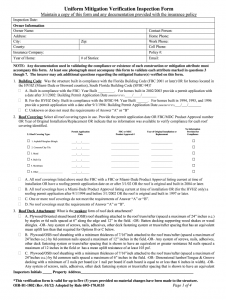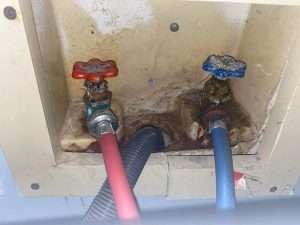The Pros and Cons of CDD Fees: Exploring
the Impact on Homeowners and Communities

When you’re looking to buy a new home, you’ll likely come across a host of charges and fees. One that often leaves potential homeowners scratching their heads is CDD fees. This fee, short for Community Development District fee, is common in certain states like Florida. But what exactly are CDD fees? And more importantly, are they worth it?
To answer this, we’ll delve into the pros and cons of CDD fees. We’ll explore why these fees exist, how they could benefit you, and the potential downsides. Knowing the ins and outs of CDD fees can make a big difference in your home-buying experience. Let’s jump right in.
What are CDD fees?
CDD fees, or Community Development District fees, are charges that are assessed on properties located within a specific community development district. These fees are typically collected by the local government or a governing board and are used to fund various infrastructure and community improvement projects within the district.
Definition of CDD fees
CDD fees are a form of special assessment that is levied on properties within a community development district. These fees are separate from property taxes and are typically based on factors such as the size of the property or the type of development.
Purpose of CDD fees
The primary purpose of CDD fees is to finance the development and maintenance of infrastructure within the community development district. This can include the construction of roads, sidewalks, drainage systems, parks, recreational facilities, and other public amenities.
By collecting these fees, the local government or governing board can ensure that the necessary infrastructure and services are provided to support the residents and businesses within the district. This helps create a well-maintained and attractive community that enhances property values and quality of life.
CDD fees may also be used to repay bonds or loans that were issued to fund the initial development of the district. This allows the local government or governing board to spread the cost of infrastructure improvements over time rather than burdening property owners with upfront costs.
Overall, CDD fees play a role in financing the development, improvement, and ongoing maintenance of community development districts. These fees ensure that the necessary infrastructure and services are provided, creating a desirable and sustainable living environment for residents.
Pros of CDD Fees
Enhanced Community Amenities and Services
CDD fees, or Community Development District fees, have become a common practice in many planned communities. While some homeowners may initially view these fees as an additional burden, they often provide numerous benefits that enhance the overall community experience.
One major advantage of CDD fees is the ability to finance and maintain enhanced community amenities and services. These fees enable the development and upkeep of facilities such as parks, playgrounds, swimming pools, tennis courts, and community centers. With CDD funds, communities can provide residents with access to recreational areas and social gathering spaces that may not have been possible otherwise. These amenities contribute to a vibrant and enjoyable living environment, fostering a strong sense of community spirit and satisfaction among residents.
Maintenance and Upkeep of Infrastructure
Another significant benefit of CDD fees is the allocation of funds for the ongoing maintenance and upkeep of infrastructure within the community. This includes roads, sidewalks, street lighting, landscaping, and irrigation systems. By collecting CDD fees, communities can ensure that essential infrastructure is regularly inspected, repaired, and upgraded as needed.
Proper maintenance of infrastructure not only enhances the aesthetics of the community but also promotes safety and accessibility for residents and visitors. Well-maintained roads and sidewalks, for instance, reduce the risk of accidents and contribute to a pleasant and walkable environment. CDD fees play a vital role in ensuring that the community’s infrastructure remains in good condition, providing a high standard of living for residents.
Increased Property Values
Investing in a property within a community that charges CDD fees can have a positive impact on property values. The availability of well-maintained amenities and infrastructure, often made possible through the collection of CDD fees, can make a neighborhood more attractive to potential buyers. This increased demand can result in higher property values and potential returns on investment for homeowners.
Moreover, the presence of community amenities, such as parks and recreational facilities financed by CDD fees, can enhance the overall desirability of the neighborhood. Families with children, for example, may be drawn to communities with well-equipped playgrounds and sports fields. These amenities contribute to a higher quality of life, making the community more appealing to homebuyers.
Local Control and Governance
CDD fees enable communities to exercise local control and governance over their own affairs. The funds collected through CDD fees are typically managed by a board of supervisors, comprised of elected residents from the community. This local governance structure allows homeowners to have a direct say in how the funds are allocated and how the community is managed.
By having a voice in decision-making processes, residents can shape the future and direction of their community. This sense of ownership fosters a greater sense of pride and engagement among residents. The transparency and accountability that come with local control can also lead to effective resource allocation and efficient management of community affairs.
Cons of CDD fees
Additional financial burden on homeowners
Homeowners who live in communities governed by Community Development District (CDD) fees often face the additional financial burden of these fees. CDD fees are collected to fund infrastructure development, maintenance, and other community services. These fees are typically added to the property tax bill and can vary greatly depending on the location and size of the property.
Paying CDD fees can put a strain on homeowners’ budgets, especially for those with limited financial resources. It is important for homeowners to consider these fees when budgeting for their monthly expenses, as they can significantly impact their overall financial well-being.
Lack of transparency in fee allocation
One of the concerns associated with CDD fees is the lack of transparency in how these funds are allocated and spent. Homeowners often have limited visibility into the decision-making process and may not have a say in how their fees are used. This lack of transparency can create a sense of frustration and distrust among homeowners who feel that their money is being spent without their input or knowledge.
To address this issue, it is important for CDDs to provide clear and detailed information about the fee allocation process. This can help homeowners understand where their money is going and ensure that the funds are being used in a responsible and efficient manner.
Potential for mismanagement of funds
Another drawback of CDD fees is the potential for mismanagement of funds. Without proper oversight and accountability measures, there is a risk that the funds collected through CDD fees may be misused or misappropriated. This can result in financial losses for homeowners and a lack of progress in community development projects.
To mitigate this risk, it is essential for CDDs to implement robust financial management practices and ensure that there are mechanisms in place to prevent fraud and mismanagement. Regular audits and transparent reporting can help instill confidence in homeowners that their fees are being used appropriately.
Difficulty in budgeting for long-term expenses
CDD fees are often collected to fund long-term expenses such as infrastructure improvements and maintenance. However, for homeowners, this can pose a challenge in budgeting for these expenses. Unlike one-time payments or annual fees, CDD fees are typically recurring and can increase over time.
This difficulty in budgeting for long-term expenses can create uncertainty and financial instability for homeowners. It is important for homeowners to carefully plan and consider the long-term financial implications of CDD fees when purchasing a property in a CDD-governed community.
Pros and Cons of CDD Fees: Case Studies
Introduction
In this section, we will delve into two case studies to provide you with real-life examples of the pros and cons of CDD fees. By examining these case studies, you will gain a deeper understanding of how CDD fees can impact different situations. So, let’s dive right into it!
Case Study 1: Residential Community Development
In this case study, we will explore the pros and cons of CDD fees in a residential community development project. Imagine a newly built neighborhood with modern amenities, including a clubhouse, swimming pool, and well-maintained landscaping.
Pros
- Enhanced Community Facilities: Thanks to the CDD fees, the residents benefit from top-notch community facilities and services that are well-maintained and provide a higher quality of life. This includes parks, playgrounds, walking trails, and recreational areas.
- Shared Maintenance Costs: CDD fees allow for the sharing of maintenance costs among the residents, relieving individuals from bearing the entire burden themselves. This ensures that the community remains well-kept and attractive over time.
- Increased Property Values: The presence of well-maintained community facilities and services can boost property values. This means that homeowners may enjoy a higher return on investment in the long run if they decide to sell their property.
Cons
- Additional Financial Burden: CDD fees are an additional expense for homeowners on top of their mortgage and other regular expenses. This can put a strain on some residents’ budgets, especially for those on a fixed income or with limited financial resources.
- Lack of Flexibility: Homeowners may feel restricted by the mandatory nature of CDD fees. They are obligated to pay these fees regardless of whether they fully utilize or benefit from all the community facilities and services provided.
- Uncertainty in Cost Allocation: Occasionally, conflicts may arise regarding the allocation of CDD fees among residents. Some may feel that they are paying more than their fair share, leading to disputes within the community.
Case Study 2: Commercial Development Project
Now, let’s shift our focus to a case study involving a commercial development project to understand how CDD fees can impact businesses.
Pros
- Improved Infrastructure: CDD fees contribute to the development of essential infrastructure, such as roads, utilities, and parking facilities, which are crucial for attracting customers to commercial establishments. This can enhance the overall business environment and promote economic growth.
- Shared Responsibility: Similar to the residential case study, CDD fees distribute the responsibility of infrastructure maintenance and improvement among businesses within the development. This ensures that the burden is not solely placed on individual business owners.
- Attractive Business Environment: The presence of well-maintained infrastructure and amenities can create a visually appealing and inviting business environment. This may attract more customers and potentially increase revenue for businesses operating within the development.
Cons
- Higher Operating Costs: CDD fees can increase the operating costs for businesses within the development, particularly for smaller businesses or those just starting out. This can have an impact on profit margins and make it more challenging for businesses to thrive.
- Limited Control: Business owners may feel that they have limited control over how CDD fees are allocated and spent. This lack of control may lead to dissatisfaction or disagreements regarding the prioritization of infrastructure projects.
- Potential for Higher Rents: In some cases, the burden of CDD fees may be passed on to commercial tenants in the form of higher rent. This can affect the affordability and viability of certain businesses, especially small local establishments.
By analyzing these case studies, you can see that there are both advantages and disadvantages associated with CDD fees in various contexts. Consider the specific circumstances and potential impacts on homeowners and businesses before making an informed decision. Stay tuned for the upcoming sections where we will explore more aspects of CDD fees.
Comparisons with Other Types of Fees
Homeowner Association (HOA) Fees
Homeowner Association fees, also known as HOA fees, are charged by residential communities or neighborhoods to cover the cost of maintaining common areas and providing certain services. These fees typically go towards amenities like landscaping, security, community pools, and other shared facilities. While both CDD fees and HOA fees contribute to the upkeep of a community, there are some notable differences between the two.
Unlike CDD fees, which are primarily intended to fund infrastructure development and bond repayments, HOA fees focus more on ongoing maintenance and management. HOA fees are often collected on a monthly or quarterly basis and are determined by the HOA board, which is made up of community residents. These fees can vary widely depending on the size and amenities of the community, ranging from a few hundred to several thousand dollars per year.
Special Assessment Fees
Special Assessment fees are occasional charges levied by HOAs or other governing bodies within a community for specific projects or improvements. These fees are usually temporary and are imposed when additional funds are needed to cover unexpected expenses or major repairs. While CDD fees are typically fixed and remain in place for the duration of the CDD’s existence, Special Assessment fees are more temporary in nature.
Special Assessment fees can be a cause of concern for homeowners, as they can be unexpected and require additional out-of-pocket expenses. However, it’s important to note that these fees are typically used for essential projects that benefit the community as a whole, such as roof repairs, road improvements, or the installation of new amenities. Homeowners should carefully review any proposed Special Assessment fees to understand the nature of the project and its potential impact on their finances.
Property Taxes
Property taxes, on the other hand, are fees imposed by local governments to fund public services and infrastructure development. These taxes are based on the assessed value of the property and are typically collected on an annual basis. While CDD fees can sometimes be mistaken for property taxes, it’s important to understand that they serve different purposes.
While property taxes contribute to the overall development and maintenance of a community, CDD fees are specifically designated for financing the infrastructure within a CDD, such as roads, utilities, and recreational facilities. It’s also worth noting that property taxes can vary depending on the location and the value of the property, while CDD fees are typically set at a fixed rate for all properties within the district.
In Summary, CDD fees, HOA fees, Special Assessment fees, and Property Taxes all contribute to the well-being and development of a community but serve different purposes. CDD fees primarily focus on financing infrastructure development, while HOA fees cover ongoing maintenance and management. Special Assessment fees are temporary charges for specific projects, and property taxes support public services and infrastructure at a broader level. Understanding the distinctions between these fees is crucial for potential homeowners to make informed decisions and plan their budgets accordingly.
Factors to Consider Before Purchasing a Property with CDD Fees
When considering purchasing a property, it is important to carefully evaluate all factors involved to make an informed decision. One such factor that requires attention is the Community Development District (CDD) fees associated with the property. CDD fees are additional expenses that homeowners must pay in certain communities to fund necessary infrastructure and services. Before committing to a property with CDD fees, it is crucial to consider the fee structure and amount, the benefits and amenities offered, and the financial stability of the CDD.
Fee Structure and Amount
Understanding the fee structure and amount is essential in assessing the financial impact of CDD fees on your budget. CDD fees can be charged annually or monthly, and the payment amount varies depending on the community and the services provided. These fees typically cover costs related to the maintenance and operation of community amenities such as parks, pools, landscaping, and roadways. It is important to review the fee schedule and consider the impact these fees may have on your overall homeownership costs.
Benefits and Amenities Offered
One advantage of purchasing a property in a community with CDD fees is the access to various benefits and amenities. These fees are often used to develop and maintain recreational facilities, community centers, golf courses, or other amenities that enhance the overall quality of life in the neighborhood. Before making a decision, take the time to evaluate the amenities offered and consider whether they align with your lifestyle and preferences. Access to well-maintained amenities can greatly contribute to the enjoyment and value of your property.
Financial Stability of the CDD
Assess the financial stability of the CDD before purchasing a property. A financially stable CDD ensures that the necessary funds are available to maintain and improve the community’s infrastructure and services. Review the CDD’s financial statements, budget reports, and reserve funds to gauge their financial health. Additionally, consider the long-term financial obligations of the CDD, as it may impact the future costs and fees associated with the property. A financially unstable CDD could result in increased fees or deferred maintenance, which may negatively affect your investment.
Conclusion
In conclusion, CDD fees can have both advantages and disadvantages depending on the perspective. On the positive side, CDD fees provide funding for essential community infrastructure and amenities, improving the overall quality of life for residents. These fees ensure that neighborhoods are well-maintained and have access to recreational facilities, parks, and security services.
However, there are also downsides to consider. CDD fees can significantly increase the cost of homeownership, making it more challenging for some individuals or families to afford. Additionally, these fees are often non-negotiable and can continue for an extended period, adding a long-term financial burden.
It is essential for prospective homebuyers to carefully evaluate the benefits and drawbacks of CDD fees before making a decision. Consider your financial situation, lifestyle preferences, and long-term plans to determine whether the advantages outweigh the disadvantages. Consulting with a real estate professional can provide valuable insights and guidance in navigating the complexities of CDD fees.
Ultimately, understanding the pros and cons of CDD fees empowers individuals to make informed decisions when considering homeownership in communities with CDDs. By weighing the benefits against the potential drawbacks, homebuyers can ensure they are selecting a property that aligns with their financial goals and lifestyle needs.





